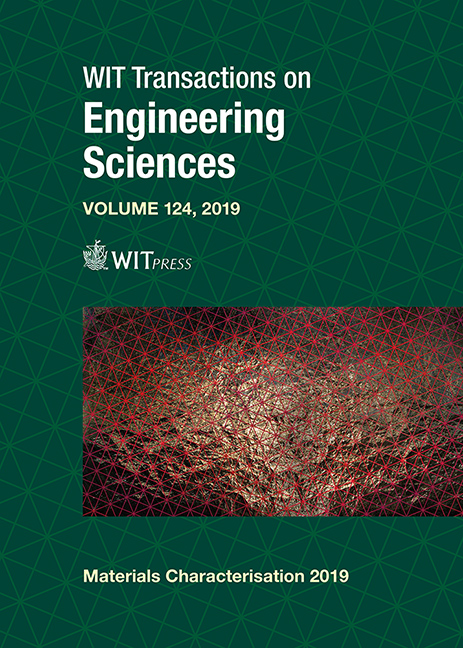MECHANICAL PROFILING OF COMMERCIAL GRADE BIODEGRADABLE PLASTIC FILMS POST EXPOSURE TO NATURAL AND ACCELERATED WEATHERING
Price
Free (open access)
Transaction
Volume
124
Pages
14
Page Range
229 - 242
Published
2019
Size
318 kb
Paper DOI
10.2495/MC190221
Copyright
WIT Press
Author(s)
SULTAN MAJED AL-SALEM, AFAF YA’QOUB AL-NASSER, MAJED HAMEED AL-WADI, HANAN HMOUD SULTAN, HAJAR JAWAD KARAM, AYYAD TOMAN AL-DHAFEERI, MOHAMMAD AL-FOUDAREE, ZAKIA RASHEED
Abstract
Market standards for plastic products are typically governed by mechanical properties that manufacturers and converters adhere to. However, in the case of biodegradable plastic film products, namely bags used on the market, the standards must convey more environmentally related factors. In this paper, mechanical profiling of three commercial grade market products were tested. The plastic films were deemed biodegradable of oxo-biodegradable nature containing calcium carbonate (CaCO3) amongst other prodegradant chemical agents. The evaluation of mechanical properties was conducted in laboratory conditions to determine the impact of exposing the samples to various degradation media, in accordance to ASTM D 882. Experiments were conducted using a universal testing machine (50 kN load cell) set to a 500 mm min-1 test speed. The measured properties included Young’s modulus (MPa), ultimate stress (MPa), ultimate strain (%), stress at break (MPa), strain at break (%) and force at break (N). The width and thickness of the film specimens were measured using an internally calibrated Vernier callipers to the nearest 0.1 mm. Processing and cutting variation was minimal between the width and the thickness over the length of some samples accounting for less than 1% of total number of samples measured. The determination of the mechanical properties was conducted post accelerated and natural weathering as per the standard test methods of ASTM D 4329 and ASTM D 5272, respectively. Statistical analysis utilizing the means of one-way analysis of variance (ANOVA) was also conducted among the samples exposed to natural weathering with respect to variables of meteorological conditions and primary/secondary airborne pollutants. The change of the mechanical properties has led to the understanding of the response of polymeric films deemed as biodegradable in response to exposure to natural environment, where waste minimization and standard development can be achieved for future mitigation.
Keywords
strain, oxo-biodegradable, polymer, stress, biodegradable plastic





